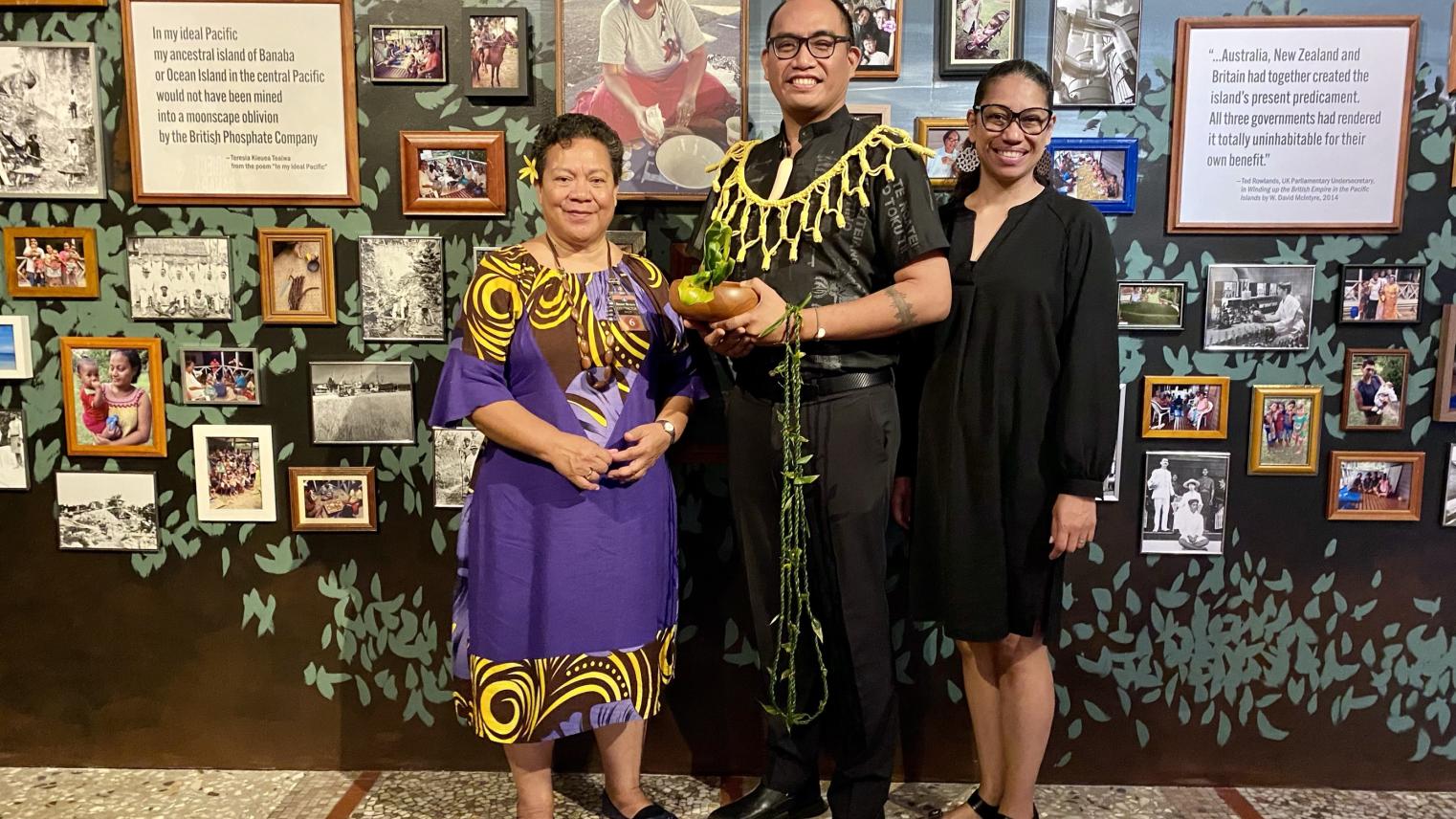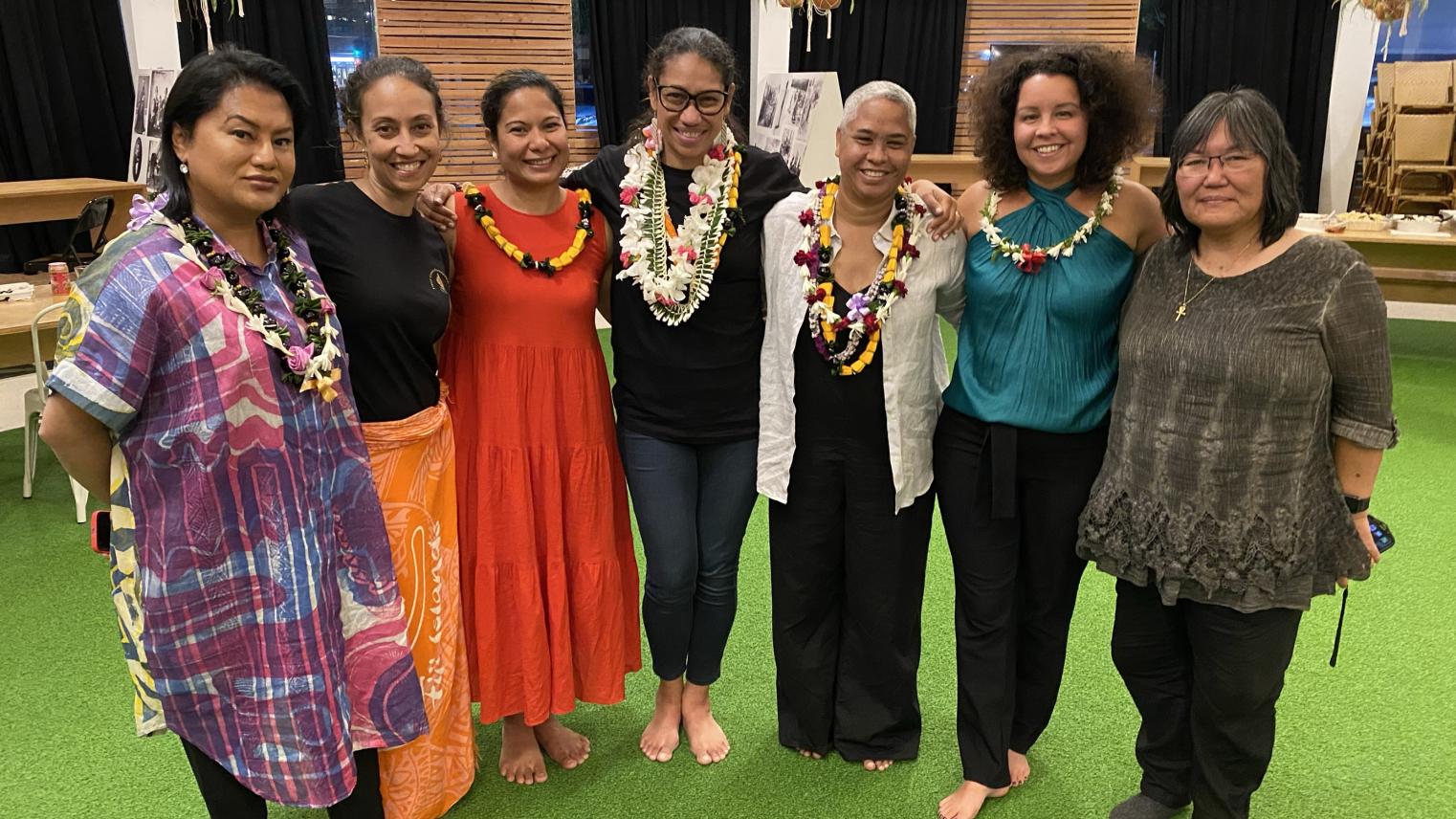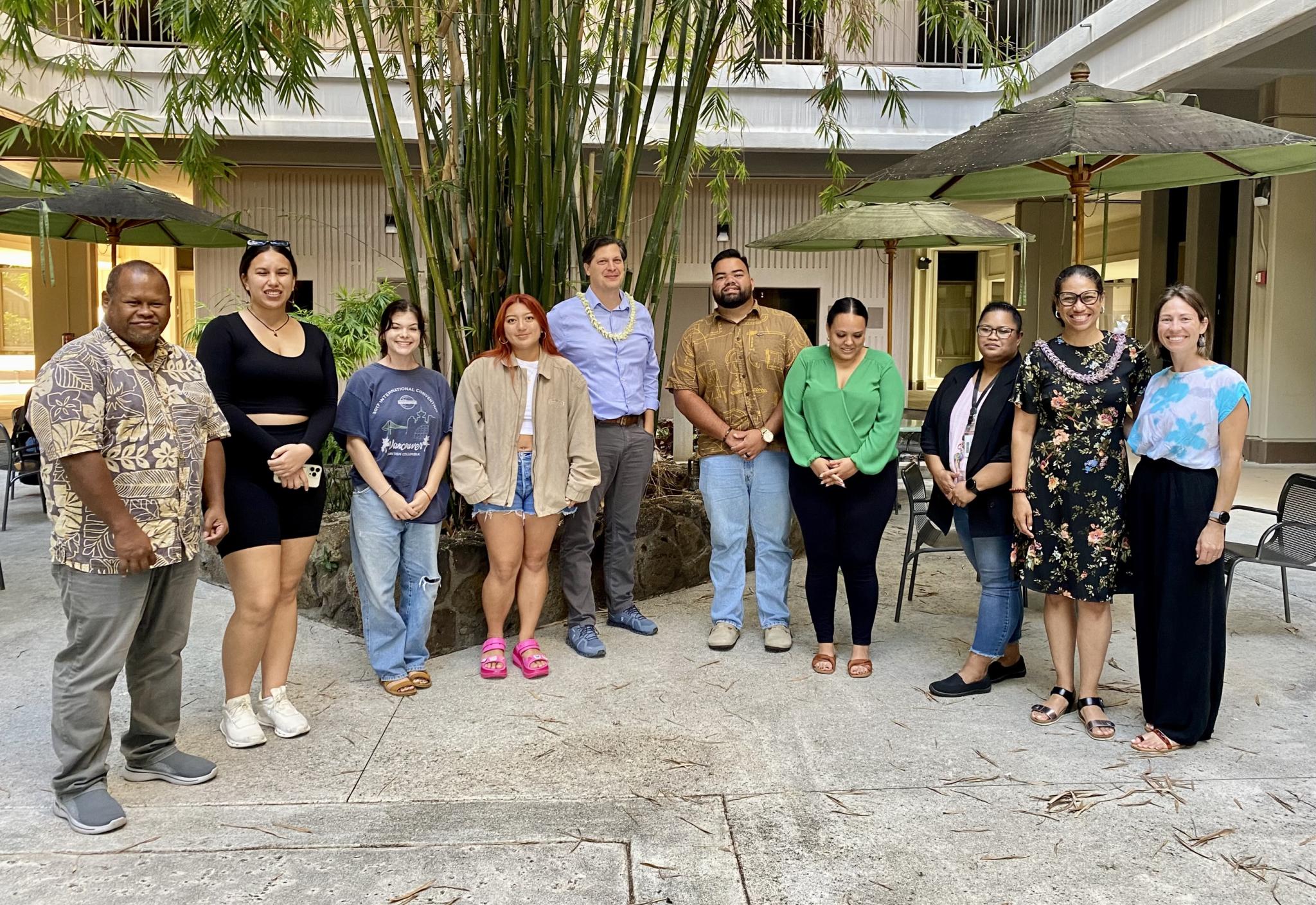Banaba at the Bishop
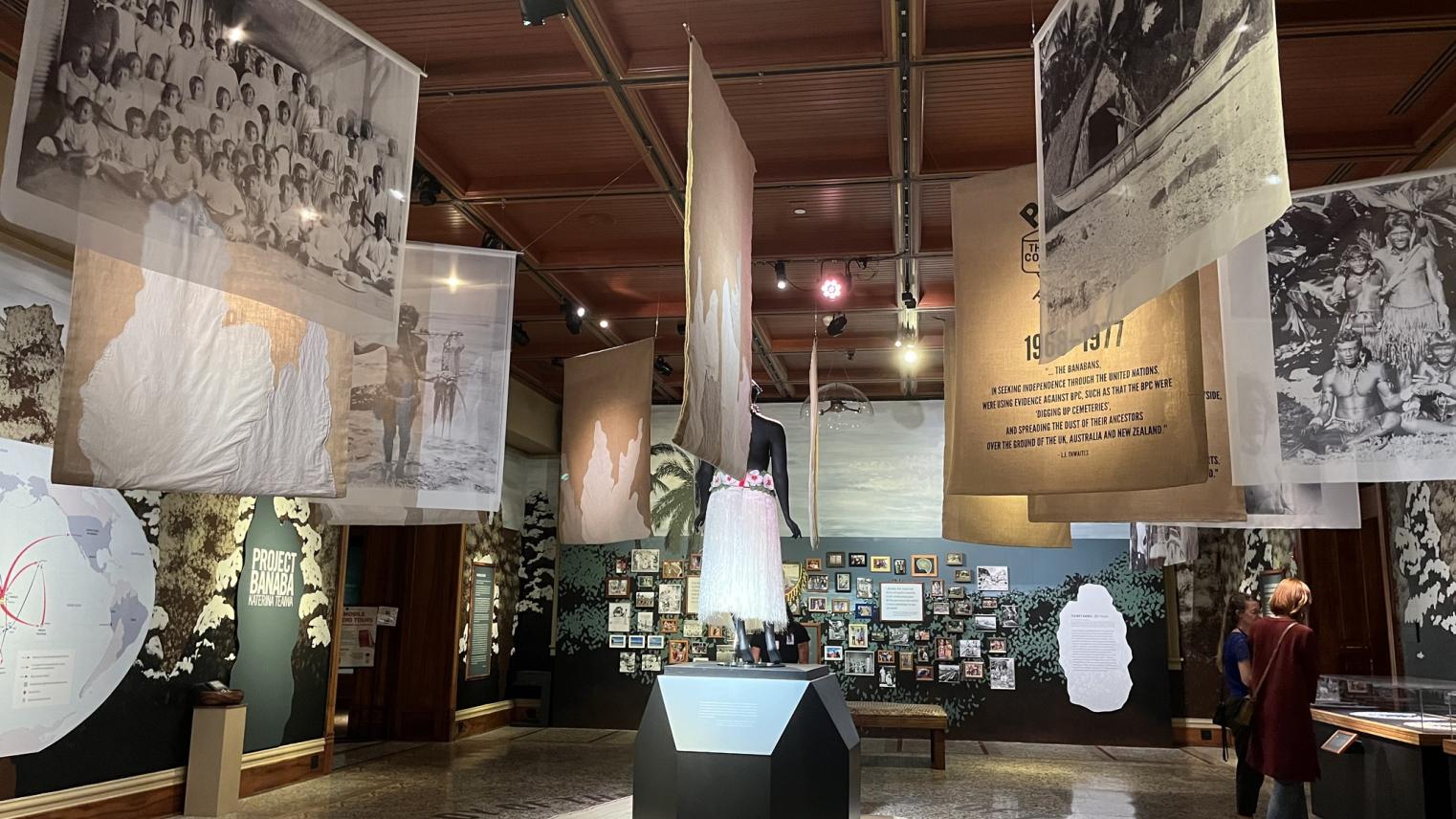
More than 25 million objects and specimens representing nine disciplines; more than 22 million biological specimens, over 2 million cultural objects, 115,000 historical publications, and 1 million photographs, films, works of art, audio recordings, and manuscripts…these all reside at the culturally vast and wonderful Bernice Pauahi Bishop Museum in Honolulu, Hawaiʻi.
And now, shining bright amongst these amazing showcases is a landmark exhibition—Project Banaba. Project Banaba commemorates the history of Banaba Island in the Pacific Ocean, which was destroyed by environmentally devastating phosphate mining during the 20th century. This led to the total relocation of its people in 1945.
The contemporary art installation is the culmination of two decades of work by Banaban scholar and artist Katerina Teaiwa, from the ANU School of Culture, History & Language at the ANU College of Asia and the Pacific. By combining her family’s personal collections with those from state and national archives, Katerina conceptualised, researched and created Project Banaba to shed light on the little-known history of Banaba, and its impact across the Moana (Pacific). It is based on her research, interviews, films, photography, and performance work, as well as the scholarship and poetry of her late elder sister, Teresia Kieuea Teaiwa.

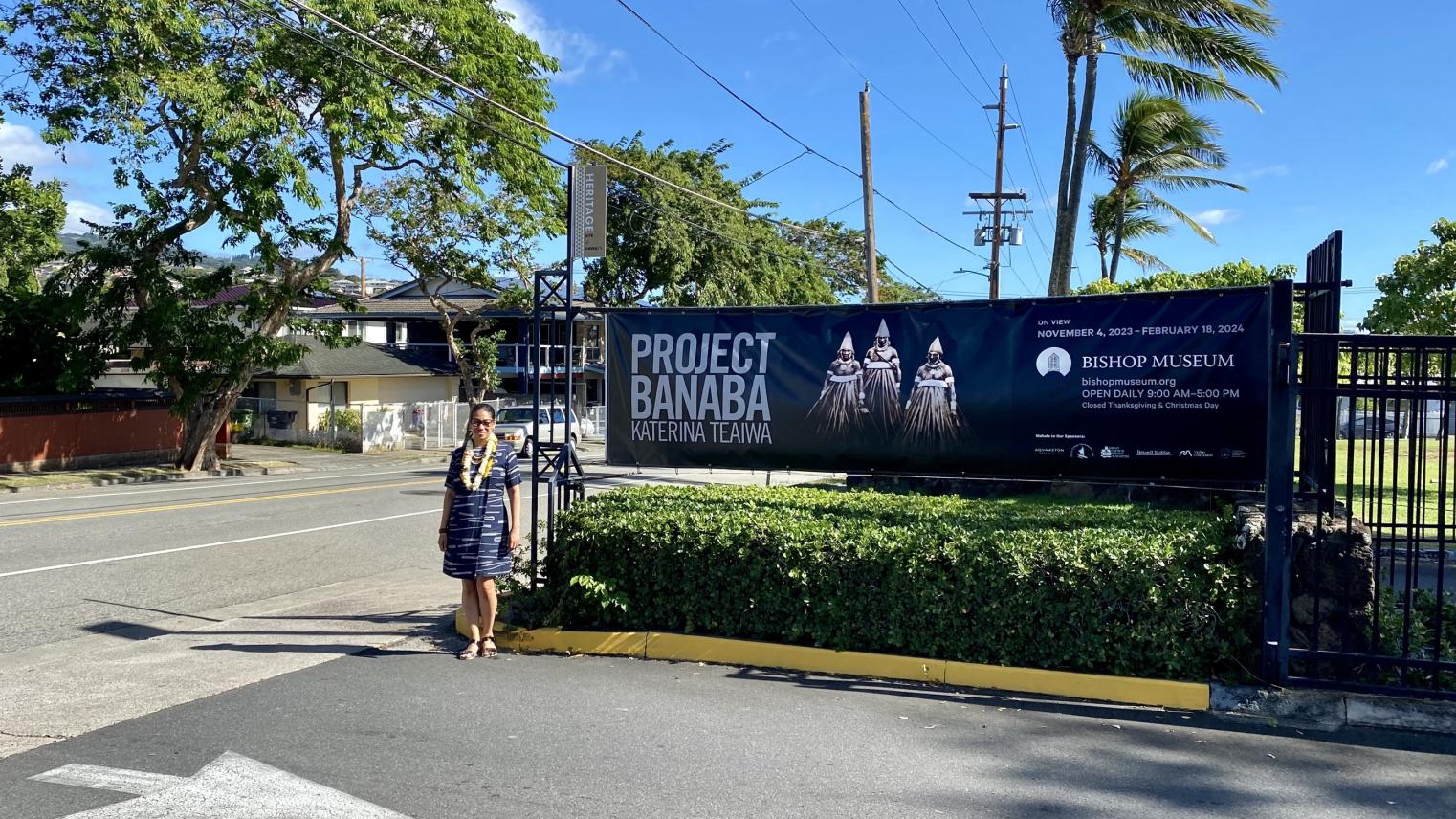
The Beginnings
Banabans view their ancestral land, the rock of Banaba, as “te aba,” or “the body of the land, and the body of the people.” Project Banaba explores how both lands and lives were transformed by powerful, imperial agricultural interests.
From 1900-1980, a series of companies representing corporate, agricultural, and colonial interests of Aotearoa New Zealand, Australia, and the United Kingdom mined the island of Banaba for phosphate.
Following Japanese occupation during World War II, the island was deemed uninhabitable and the Banabans were removed to Rabi Island, Fiji, ending a millennium of continuous habitation on Banaba. For two decades, Teaiwa followed the flows of extracted phosphate, miners, company and government officials, Banabans, and many stories linking Australia, Aotearoa New Zealand, Kiribati, Fiji, and Hawaiʻi.
Addressing environmental and human trauma caused by the displacement and dispersal of land and ancestors is a central and driving impetus for the exhibition. As Teaiwa explains, “Banabans had been burying their ancestors in those lands for thousands of years; the ancestors have become part of the rock, they’ve become part of the soil. When the soil is removed, so are the ancestors.”
Teaiwa’s art-based research practice traces her Banaban ancestors to the sites of dispersal, by proposing gallery installations in countries where Banaban fertilizer was purchased and integrated with the land. It is noted that Hawaiʻi imported fertilizer made from the Banaba mining enterprise for years, to expand industrialized agriculture on large-scale plantations during the late 19th and early 20th centuries.
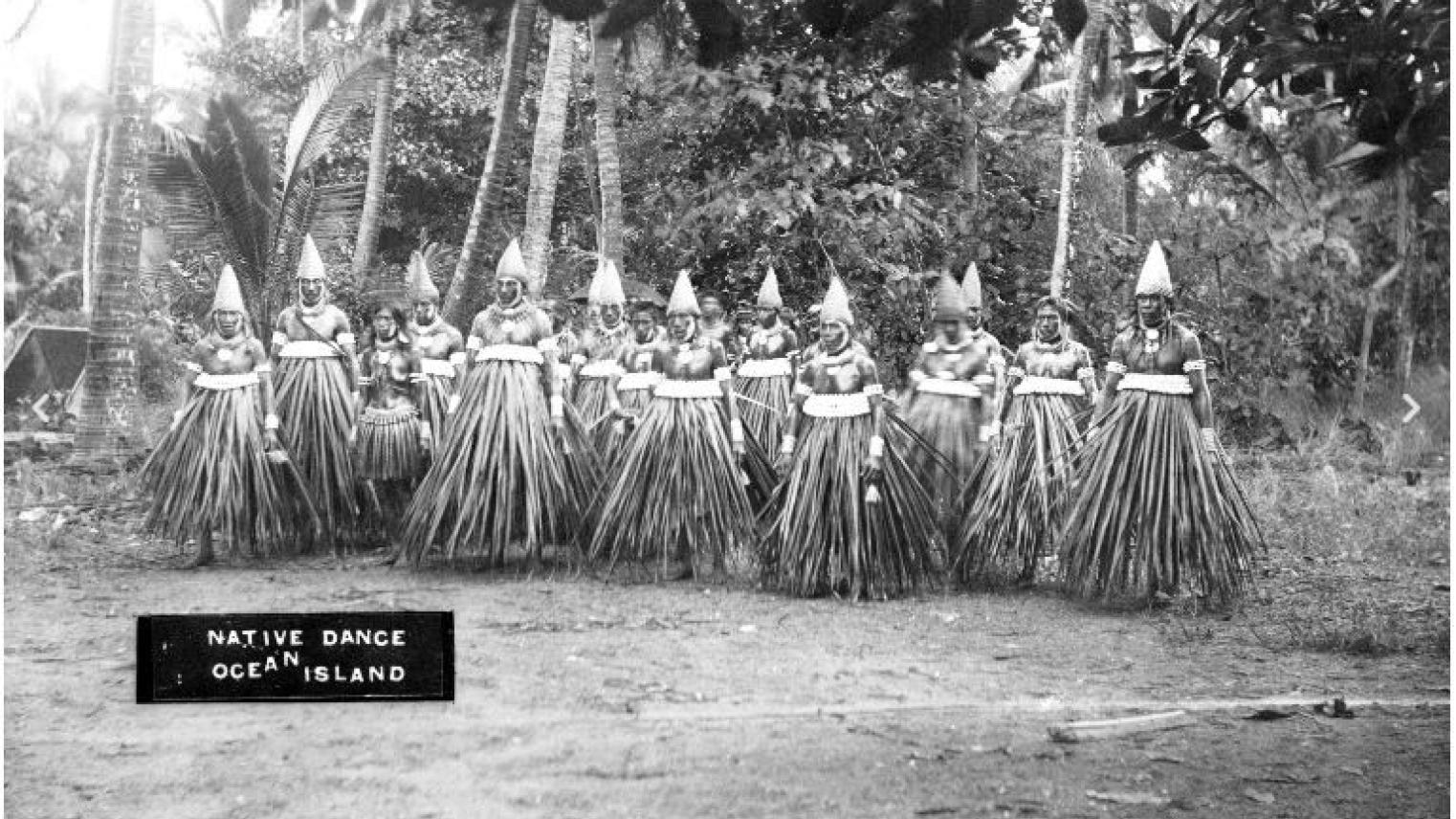
The Tribute
To mark the opening of Project Banaba, artists, poets, and dancers came together to pay tribute to Teresia Teaiwa, whose ground-breaking work in Pacific Island Studies was a foundational inspiration for artist Katerina Teaiwa and the exhibition co-curators. As a distinguished Banaban, I-Kiribati and African American scholar, poet, and activist, Teresia Teaiwa mentored and inspired countless Pacific Islander and Native Hawaiian scholars, poets, and activists today. Teaiwa’s work not only challenged our understanding of Pacific Island Studies but also reinvented the field by calling out power dynamics, making space for more diverse voices within Oceania, and drawing connections between militarism, colonialism, and capitalism across the Pacific. Through poetry and storytelling, the opening weekend of the exhibition was launched with a tribute to Teresia Teaiwa’s ongoing legacy as evidenced in the local community and her ʻohana’s work.
The highlights of the opening event have been captured here.
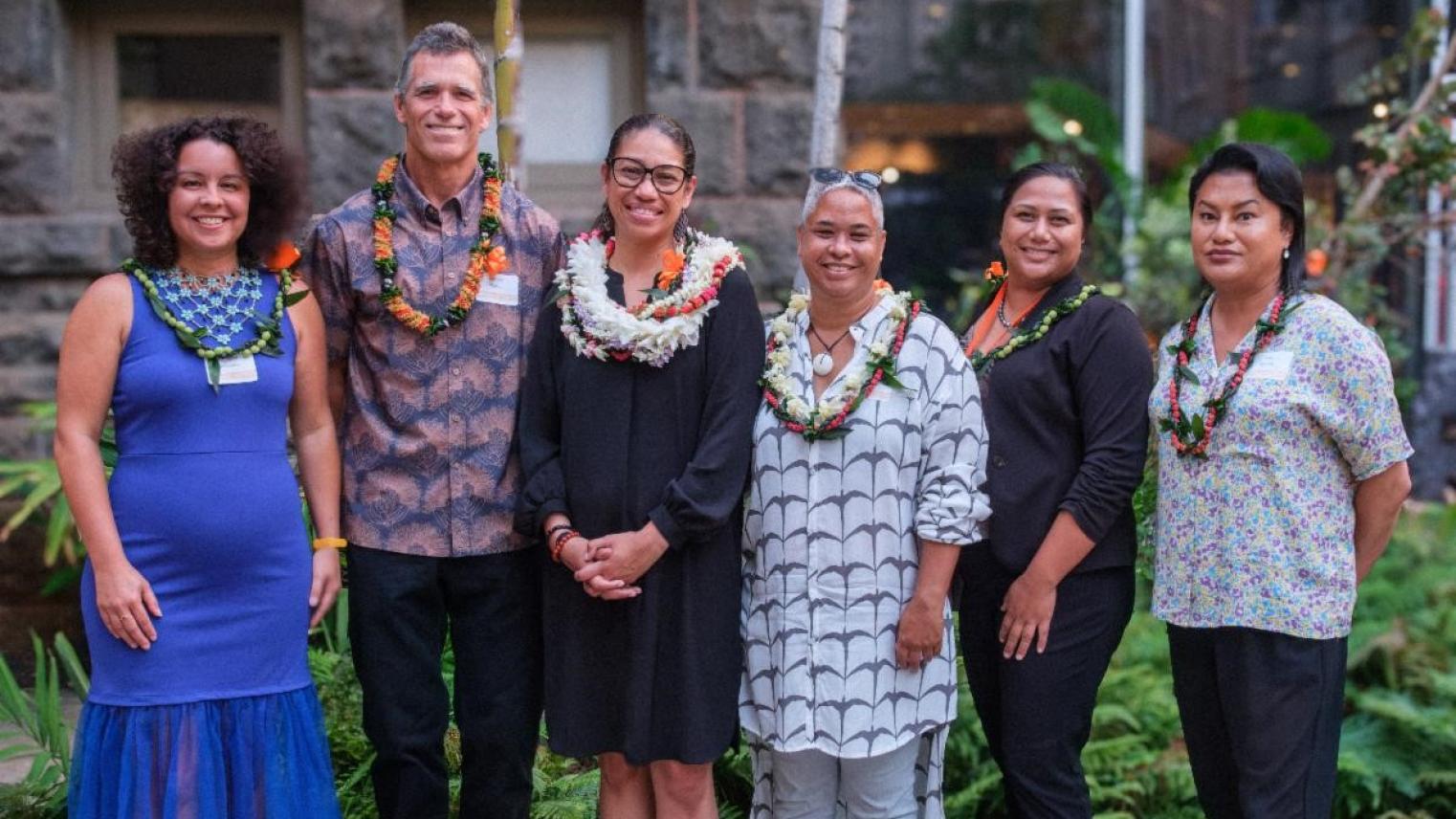
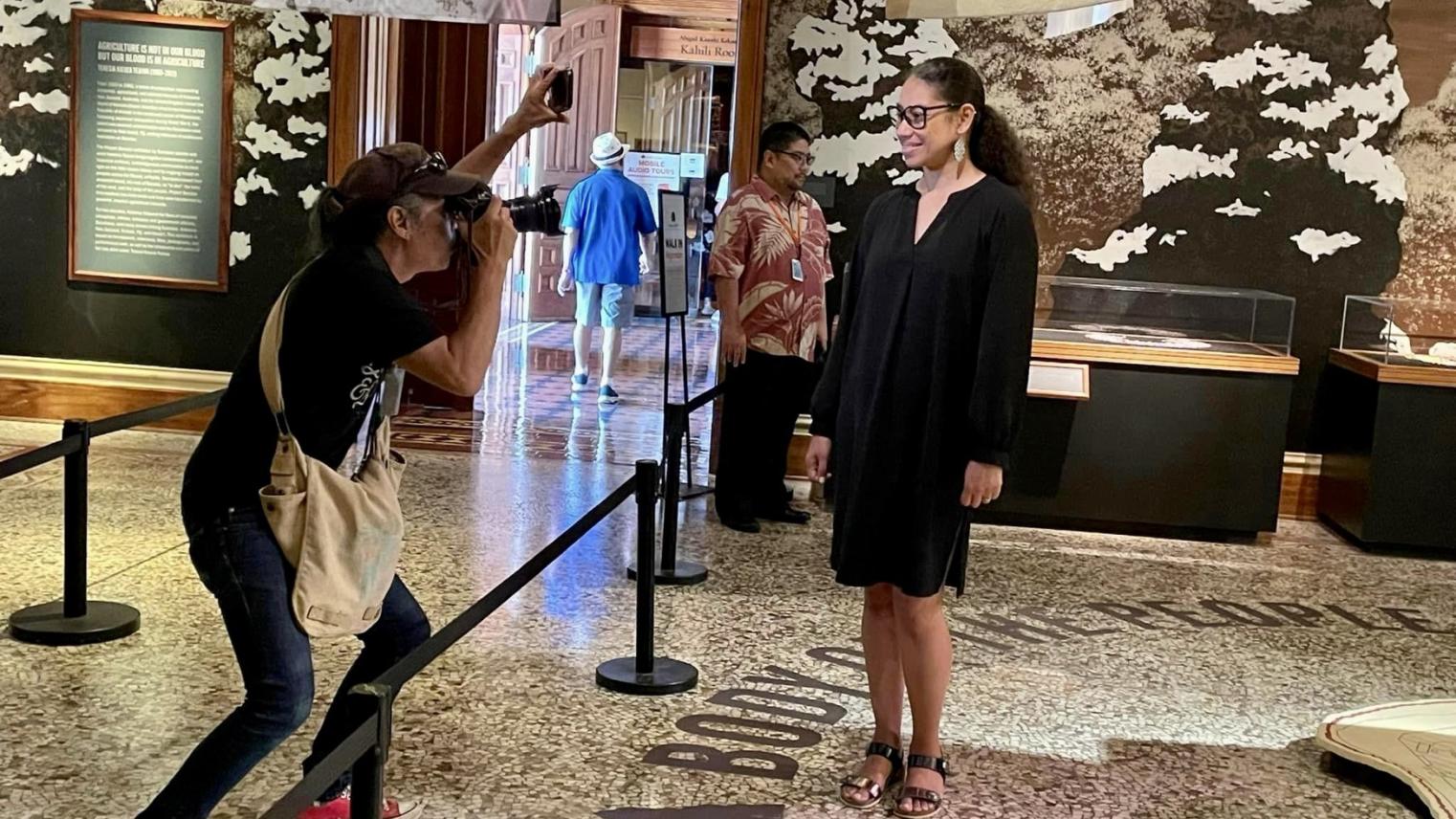
The Exhibition
The exhibition, which opened to the public on 4 November, features three interconnected installations exploring how the people and the land of Banaba were viewed and transformed by imperial phosphate mining and global agricultural interests. Black and white photographs, colour photographs documenting political protest and family connections, and textiles made by contemporary artists are remixed by Teaiwa and will be on view in the gallery.
Co-curated by Yuki Kihara, Joy Enomoto, and Director of Cultural Resources Healoha Johnston, Project Banaba is based on Katerina’s archival research, interviews, film, photographs, and visual arts and performance work, informed by the flows of phosphate rocks, mining workers, and the Banaban people. It is funded by a grant from the Hawai‘i Council for the Humanities, through support from the National Endowment for the Humanities.It is funded by a grant from the Hawai‘i Council for the Humanities, through support from the National Endowment for the Humanities.
The exhibition will run through till 18 February 2024, and the 78th anniversary of the displacement of the Banaban people will be observed on 15 December 2023 during the run of the exhibition.
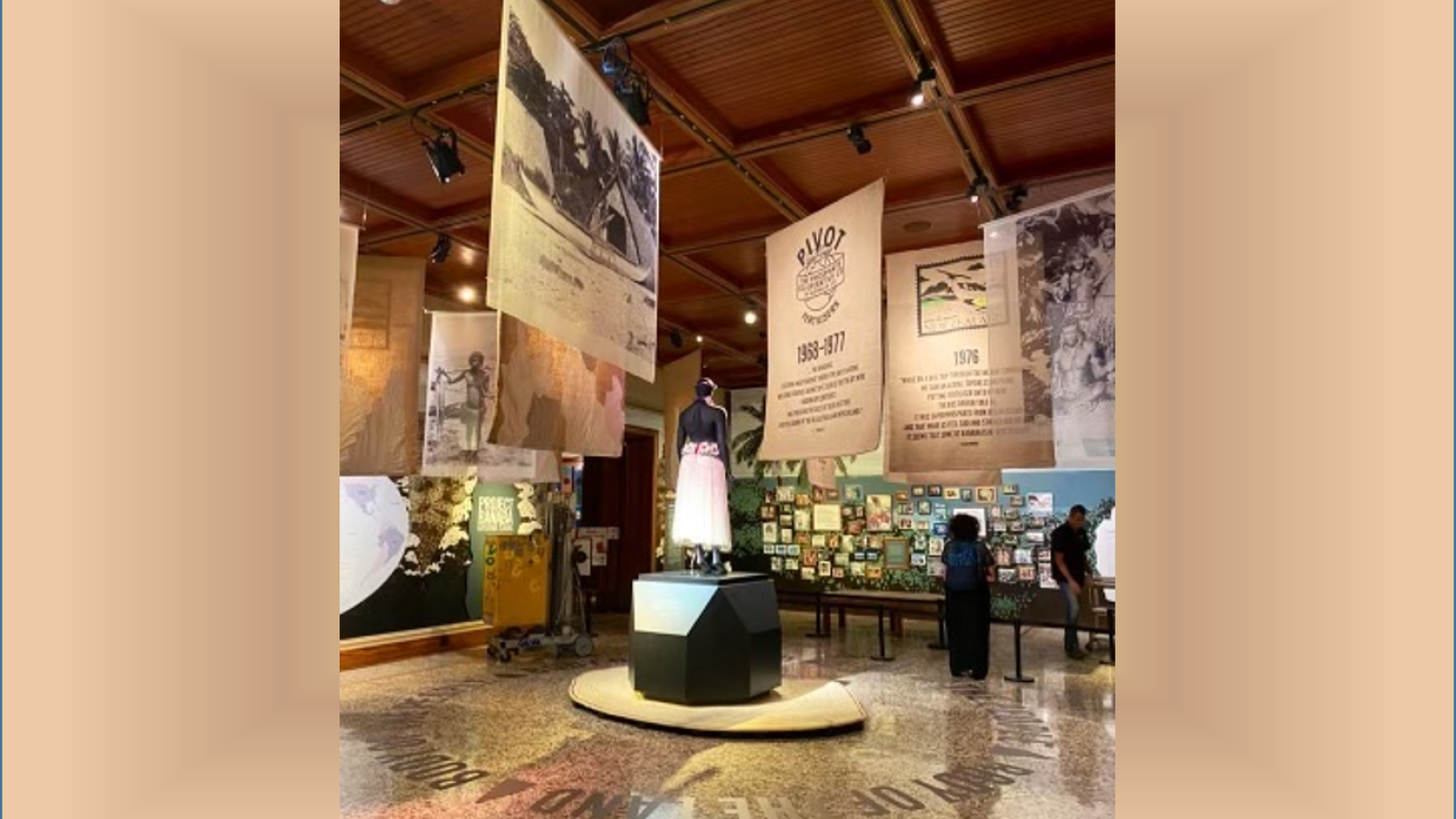
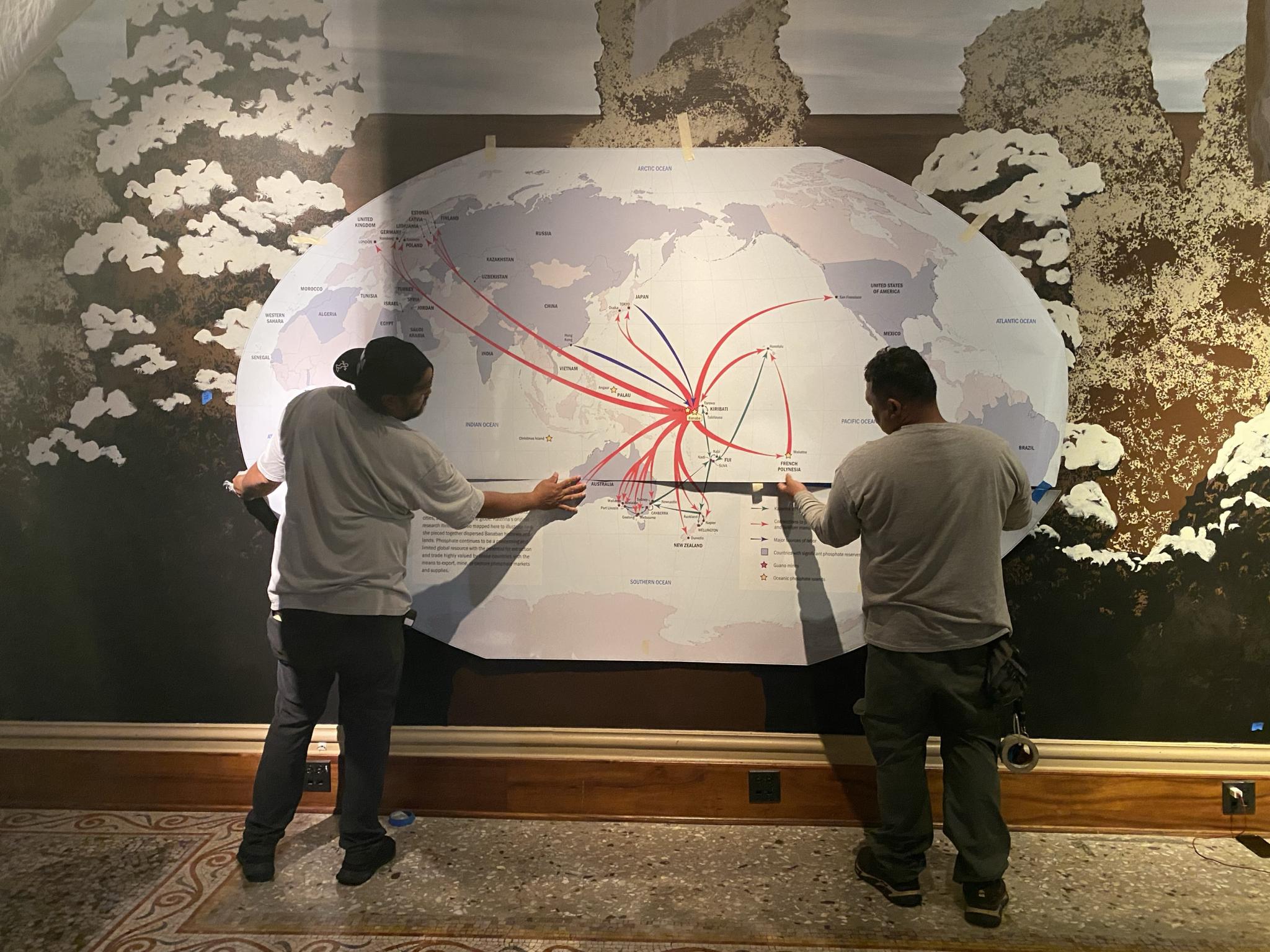
“Bishop Museum is grateful to present the Project Banaba exhibition as it offers us all the chance to learn about complex histories that inform our present reality in the Pacific. Visitors to the Museum will have the opportunity to understand profound lessons that we, collectively, cannot afford to repeat. It also makes visible experiences of displacement, resilience, and resistance, which are familiar experiences to so many Pacific Islanders, yet remain less-seen.” — Healoha Johnston, Bishop Museum, Director of Cultural Resources and Exhibition Co-curator
